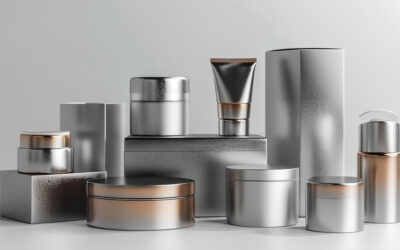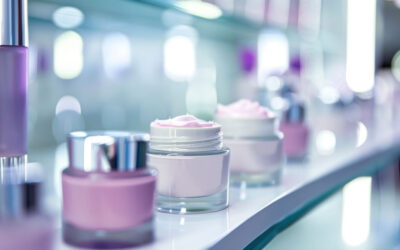In 2022, American cosmetics brands generated an estimated $49 billion in profits, and it’s estimated to continue growing at a slightly faster than average rate. If you are a beauty aficionado with an innovative idea, your new product or products can allow you to get a piece of the pie for yourself. However, starting a beauty company isn’t only about beauty. You’ll also need to learn how to test your product, develop it, and market it to buyers. Your branding and marketing choices can make or break your new venture, so you should take the time to do it right.
Beauty Industry Sectors
The beauty industry includes a wide range of different products and services. Market analysis divides the beauty industry into five main categories:
- Skin care
- Hair care
- Makeup
- Fragrances
- Toiletries
As a small business, it’s a good idea to master cosmetics manufacturing and sales processes for one high-quality product or a small line of products in one specific sector before expanding. Growing too large too fast can lead to quality problems and other issues. The regulations and processes can be different working with a skin care manufacturer compared to a makeup manufacturer.
Private Label Beauty Products
Private label cosmetics refer to exclusive products made from an existing general blueprint made by a large manufacturer altered to meet the seller’s specifications (within industry regulations, of course). The product is made specifically for one particular seller, who will then sell it to their customers. However, the seller doesn’t typically have a patent on the product as it’s technically the manufacturer’s creation, but they own the product once they receive their order.
There are four types of cosmetics private label:
- Generic
- Copycat
- Premium brands
- Value innovators
If you sell private label cosmetics, it’s best to learn your place in the industry so that you can establish your brand identity and unique characteristics.
White Label Cosmetics
White label cosmetics are generic cosmetic products made by foreign manufacturers with the seller’s unique branding. Multiple retailers can sell the exact same product but have different branding. While these products aren’t necessarily the most exclusive or the most unique, they are easy to manufacture. Sellers don’t need to worry about developing an innovative product that stands out from the competition while adhering to industry regulations, as the manufacturer has already gone through those processes.
Manufacturing A New Cosmetic
Development
Your first step will be to perfect the recipe for your product. The recipe needs to produce consistent results every time and consist of approved ingredients.
With your recipe nailed down, you will need to shop around to find the right manufacturer for you. Manufacturers who specialize in cosmetic contract manufacturing will have experience in the industry and have their processes nailed down, which can reduce the price and make the experience pleasant. Still, you’ll need to compare prices and policies before you make your decision. Enlist the help of a contract lawyer to guide you through the paperwork, especially if you’re new to the industry.
Quality Control and Testing
Cosmetics come into contact with your body, so they are highly regulated. A high-quality beauty manufacturer will work in highly controlled conditions and randomly test the product as it’s being made to ensure you receive a product that you can be proud to sell.
Branding
Arguably the most creative part of creating your private label or white label cosmetic is designing your packaging and labeling.
Your choices should represent your brand’s core values. For example, if your core values include environmental efforts, you may want to opt for a slightly more expensive yet eco-friendly packaging material. Alternatively, if your core values include inclusion and making beauty products accessible to all income levels, you may want to consider the less expensive packaging so that you can keep your costs down.
Your brand name and logo should tell consumers about the product and your brand with one simple graphic. You can tell a lot with one graphic, though. It starts with a name that will appeal to your target audience and grow with you and your business grows. The colors and font can also help people learn about you. Remember that a teenager may respond to different imagery than a middle-aged woman.
Finally, you’ll need to decide what information you want to put on the label. You only have a limited amount of space, so use it wisely. Your name and logo should be the most prominent information, and you may have to include certain information by law, such as the ingredients. Place these sections onto your labeling first and then make the most of the empty space so that it attracts and persuades consumers to buy it.






